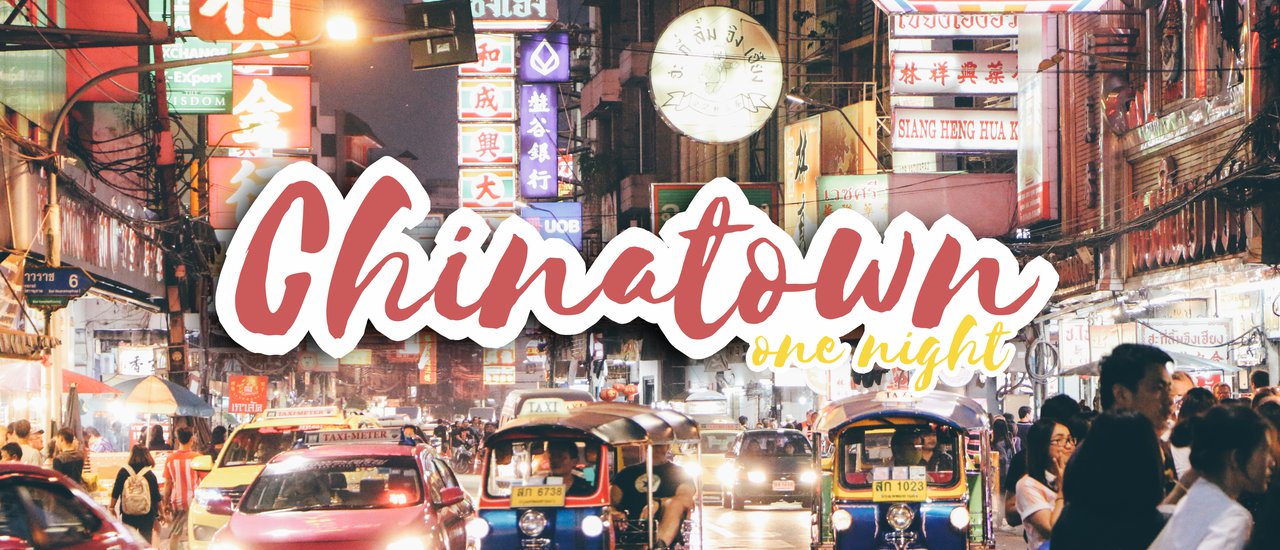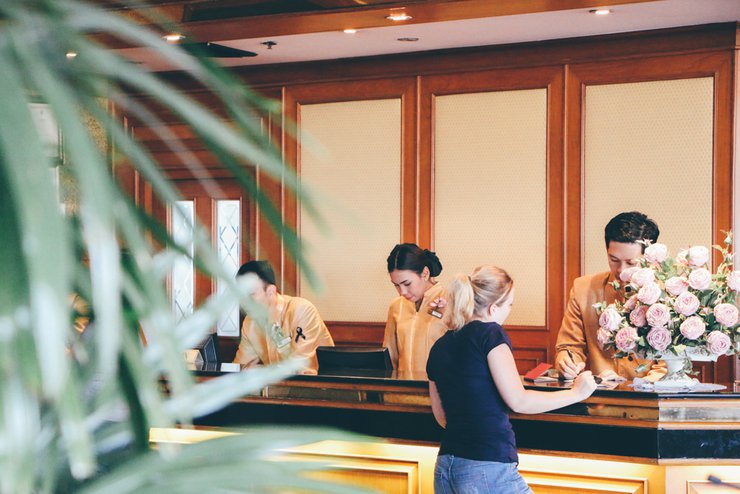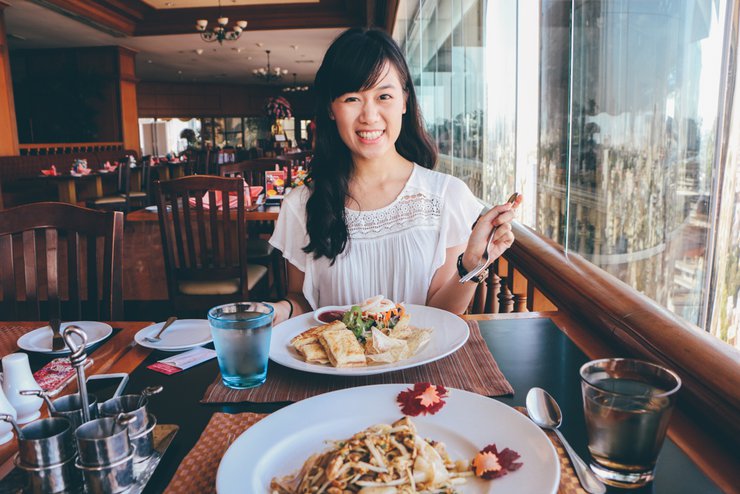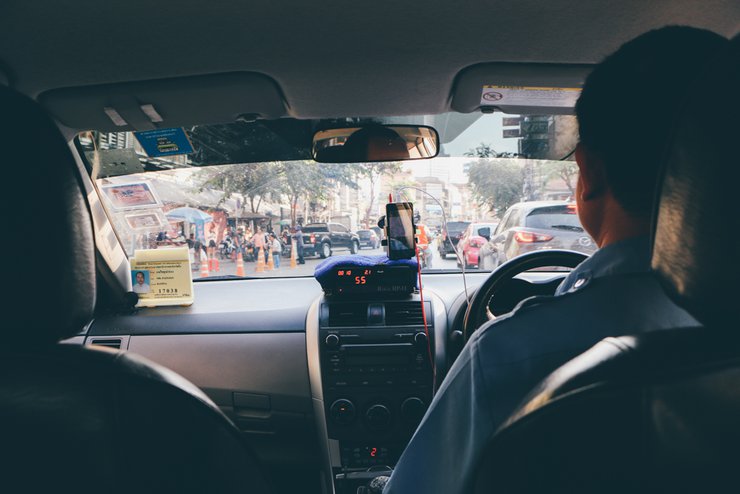
In 2016, CNN ranked the cities with the best street food in the world, with a total of 23 countries. Bangkok, specifically the Chinatown district or Yaowarat Road, which offers a wide variety of food options, including savory dishes, desserts, and fruits, was ranked number one. It is a favorite among both Thais and foreigners. Let's find out what delicious food and activities are available there.
Spending half a night exploring the culinary delights and shopping opportunities of Chinatown is typically sufficient, allowing for a return home before bedtime. However, on this occasion, we opted for a change of pace, choosing to stay overnight in the city, not far from Chinatown. This decision was motivated by a desire to extend our exploration time without the pressure of returning home. Our accommodation of choice was the Prince Palace Hotel, conveniently located in the Bo Bae Market area.

We left home around noon to check in to our accommodation and have lunch at the hotel's 12th-floor restaurant.

We each ordered a different dish: stir-fried chicken noodles and a ham and cheese sandwich. The sandwich was particularly delicious, with crispy bread and generous fillings of cheese and ham.

After finishing lunch, I took my bag back to my room and took a taxi from the hotel to Wat Mangkon Kamalawat, also known as Wat Leng Noei Yi, located on Charoen Krung Road between Soi Charoen Krung 19 and 21.

To pay respects and seek blessings from the deities for good fortune before continuing to explore the culinary delights of Yaowarat Road.

Upon entering the temple gate, the incense, candles, and flower vendors are located on the right-hand side.


Adjacent to the sales point is an area designated for incense and candle lighting.


Subsequently, proceed to pay respects to the various deities, starting from point 1 and continuing to point 6, following the signs.


The interior of the temple houses numerous deities for worship and prayer, including the guardian deity of fate, "Tai Sui Ye", the deity of medicine or divine doctor, "Hua Tuo Xian Shi Gong", and the deity of prosperity, "Tai Sui Ye".

Maitreya Bodhisattva, also known as "Puguhuizhuzhou", is similar to Mahakasyapa "Guanyin Pusa", Avalokitesvara Bodhisattva "Puge", and "Pama". The most popular deity for worship and blessings is the God of Fortune "Caishenye". There are a total of 58 deities in the temple.

One can walk in circles until reaching the exit door.




The central area houses the main shrine, which enshrines three principal Buddha statues: Sakyamuni Buddha, Amitabha Buddha, and Bhaisajyaguru Buddha, collectively known as "Sam Po Huat Chok".

Accompanied by 18 Arhats, also known as "Catching the Poey Lo Hang".


The entrance gate is adorned with a shrine dedicated to the four Lokapalas, with four statues of deities (two on each side).

Clad in Chinese warrior attire, they hold various weapons and objects, including a pipa, sword, umbrella, and pagoda.

The Chinese refer to them as "Si Tai Tian Wang," which translates to "Four Heavenly Kings," deities who safeguard and protect the four cardinal directions.

Leng Noei Yi Temple was built in 1871 during the reign of King Chulalongkorn (Rama V) and took approximately eight years to complete.

"Leng Noei Yi" literally translates to "dragon lotus temple." "Leng" means dragon, "Noei" means lotus, and "Yi" means temple or monastery.

"Mangkon Kamalawat Temple" is the official name bestowed upon the temple by King Chulalongkorn (Rama V).

The temple's architecture is in the southern Chinese style of the Teochew school of craftsmanship.



The highlight of this place is the ceremony to ward off bad luck and resolve the year of conflict. The conflicting years in 2017 are Rooster, Goat, Rabbit, and Rat.

The process of performing the "Sadet Kruea" ceremony to alleviate the effects of the zodiac year is not complicated, as there are clear signs indicating the order and explaining the steps involved.


After paying respects and making offerings at the temple, we walked through the alley opposite the temple and emerged onto Yaowarat Road.

Vendors are setting up their stalls, and the crowd is starting to swell.


Besides the main road, there are many small alleys where restaurants are bustling with activity.

Our first dish is the famous Moo Satay from Hiya Cha Restaurant. The skewers are grilled over hot coals and served with a peanut dipping sauce, pickled cucumber relish, and toasted bread.

The next stop is fresh spring rolls, the length of the queue is a testament to their deliciousness.

As dusk settles, the number of food enthusiasts, especially foreign tourists, significantly increases.

Restaurants line both sides of the street, offering a variety of culinary options to tempt your taste buds as you stroll along.

Next, let's move on to the Hua Seng Hong restaurant.

This restaurant offers a wide variety of dishes at reasonable prices, especially if you avoid seafood.


The jellyfish salad is a must-try dish. The jellyfish has a satisfying crunch, and the spicy dressing complements it perfectly.

Besides restaurants, there are also souvenir shops, dried food shops, and clothing stores. This shop, for example, focuses on selling cheongsam dresses and has a wide variety of styles and patterns to choose from. If you're looking to spend a few thousand baht, this is the place to do it.

After shopping, they went out to find something to eat.


Walk around and come back to eat Shanghai hot pot.

The restaurant is currently experiencing a high volume of customers. Please anticipate a short wait.


Shanghai green noodles, stir-fried with eggs, served with pickled shrimp and squid. Best enjoyed hot.

Conclude with a wide variety of desserts to choose from according to your preference.

Upon arriving at Yaowarat, I decided to try bird's nest. I ordered a cup of bird's nest with ginkgo nuts, but the amount of bird's nest was disappointingly small. I felt like I had wasted my money.

Along both sides of Yaowarat Road in Chinatown, there are many shops and restaurants to choose from. Many shops sell similar food. We ourselves cannot say which shop is more delicious than the others because we have not tried every shop. Just three or four dishes are enough to fill us up. Let's just say that if you see a shop that looks delicious, try it. We think that the fun of coming to Chinatown is being able to eat what you want and try the shops you want. You might even find a shop that you like that no one has ever recommended before.

After strolling until nearly ten o'clock in the evening, we were both full and exhausted. We decided to take a taxi back to the Prince Palace Hotel to rest.

Our room for tonight is an Executive Suite located on the 20th floor, where there are only two rooms per floor.

The Executive Suite is located at the corner of the building, providing ample space.


The room is adorned with elegant furniture, plush carpeting, and warm orange lighting, creating a cozy and inviting atmosphere.


The bed and pillows were extremely comfortable, ensuring a restful sleep throughout the night.



A notable feature of the Executive Suite is the expansive floor-to-ceiling windows that line one or two walls of the rectangular room, offering unobstructed views of the surrounding landscape.



The view from our room to the west: the Golden Mount pagoda of Wat Saket on the left, and the Democracy Monument on Rajadamnoen Klang Avenue on the right.

The southern view offers a glimpse of the Hua Lamphong Railway Station and the city lights.

The room is fully equipped with amenities.


The bathroom is divided into three sections. The first section is the bathtub area. The second section is the shower area with a glass partition.

The final section comprises the toilet and sink, featuring a large mirror.

The next day, we woke up late, showered, got dressed, packed our things, and checked out. We then had lunch at the hotel's Japanese restaurant.

The restaurant is located on the 11th floor of Building C and is open daily from 11:30 AM to 10:00 PM. On Saturdays and Sundays, a buffet is available for 599 baht per person.

The restaurant's interior is adorned with cherry blossom trees and traditional Japanese decor, creating an authentic Japanese dining experience.

The menu offers a wide variety of dishes, including raw fish.

Rice balls and sushi

Steaming miso soup

Fried dumplings and tempura

Mixed greens

The food is ready, let's eat!!!





And for dessert,



Before returning, we stopped by the Bo Bae Market, a hub for clothing, bags, and various fashion items at retail and wholesale prices, located on the lower floor of the Prince Palace Hotel. This concluded our short weekend trip.

Accommodation Contact Information
Prince Palace Hotel
Phone: 02-628-1111
Website: www.princepalace.co.th
Thick Eyebrows & Round Eyes
Love is a journey | Because love is a journey…
Follow our journey at: LOVE IS A JOURNEY
LOVE & LIFE IS A JOURNEY
Friday, October 4, 2024 3:23 PM





















